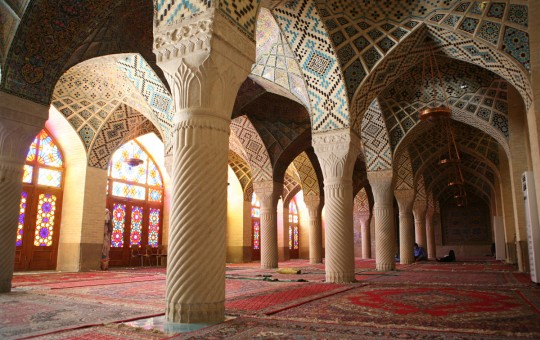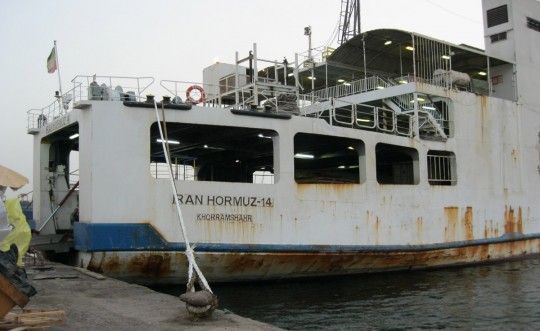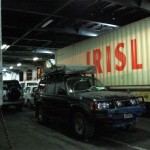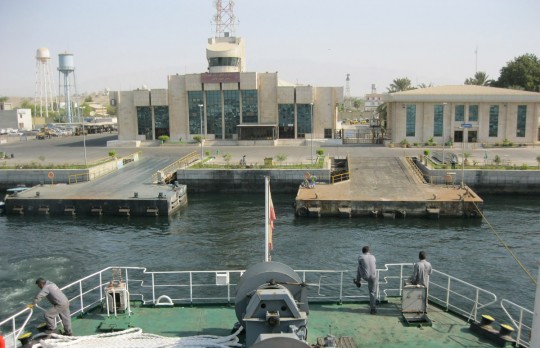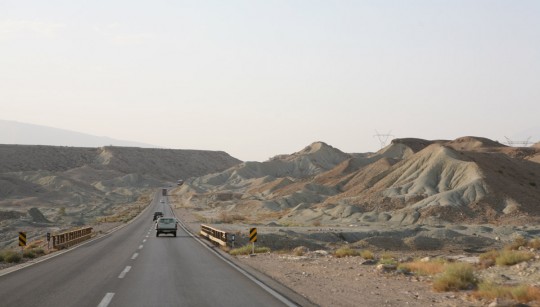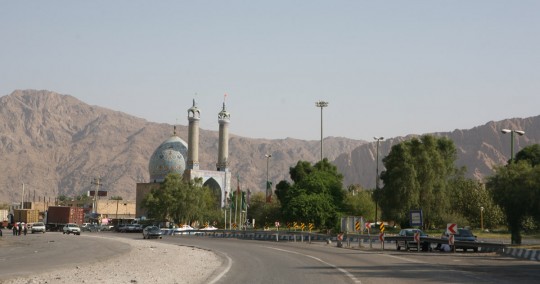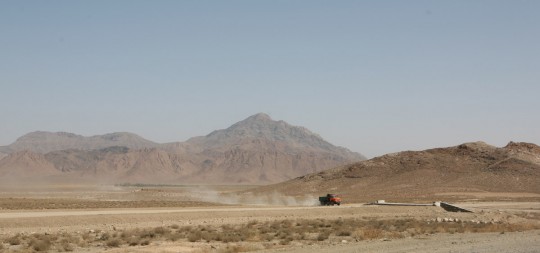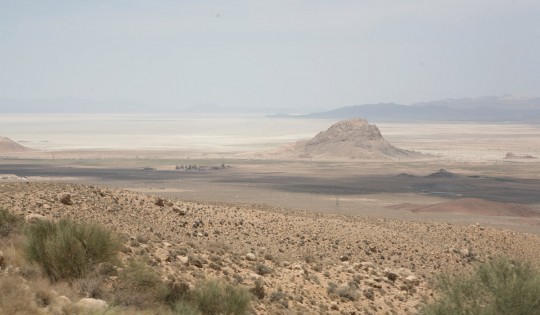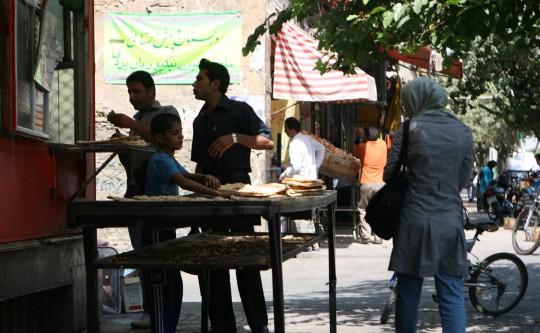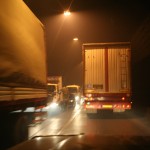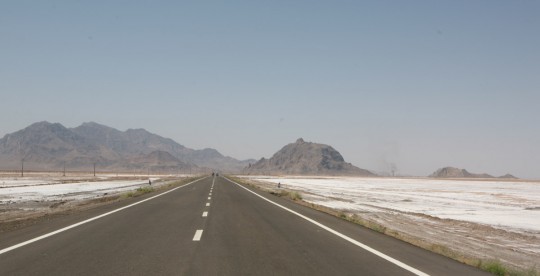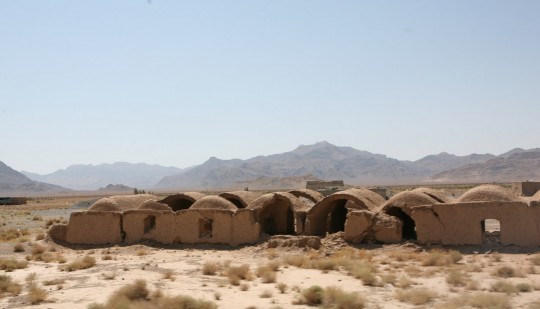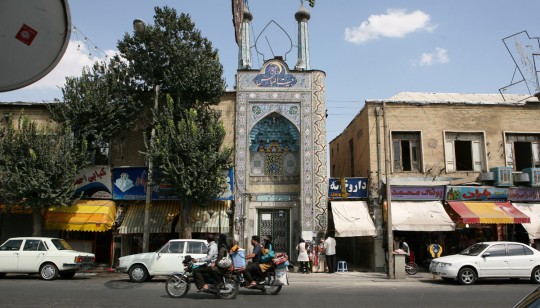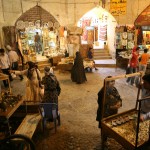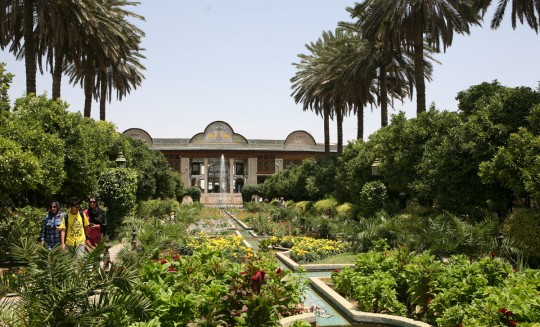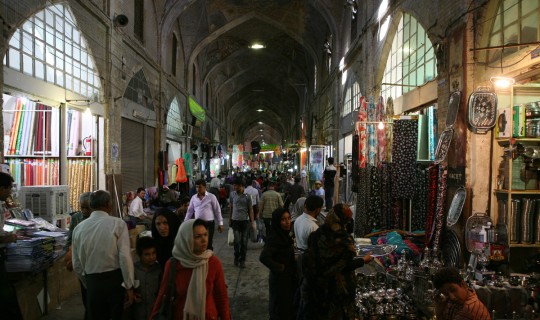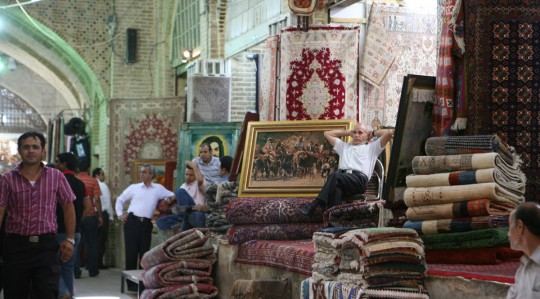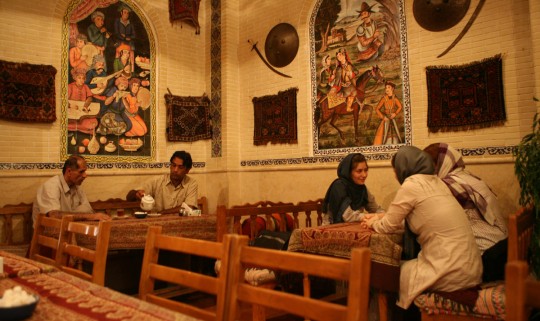
An hour after I leave Shiraz, I arrive on the Persepolis site. It is late in the day, so I just camp for a small fee on the parking lot, in front of the police station. It is quite windy, and I have to use ropes to secure the tent fabric tight so I don’t have the flapping noise all night long. In the morning I fold the tent and walk to the site. It is early when I penetrate the gates of Persepolis, and there are not much people.
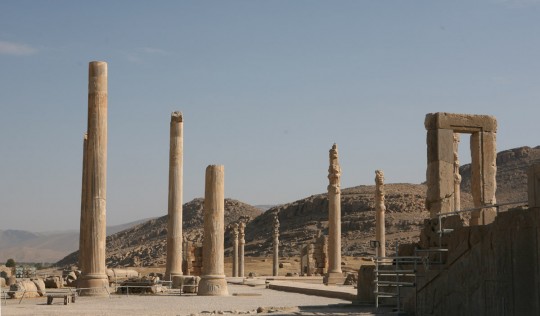
Persepolis is the symbol of the Achemenid Empire which started in the 7th century BC. It is the most famous masterpiece of the Near Eastern civilizations. The ancient city was lost for hundreds of years, covered by sand, and only in the 30’s excavations have started. As usual in Iran, the site and its museum are very cheap to visit, at US$ 0.50. In fact what is expensive in Iran is the lodging; otherwise it is the perfect destination for the budget traveler.
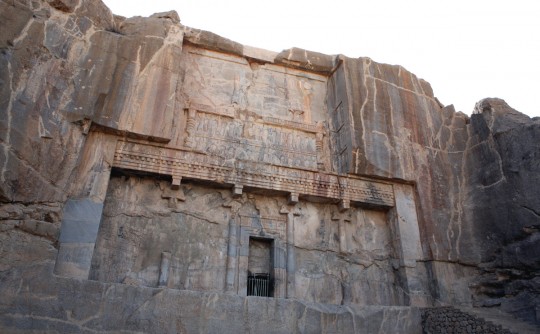
I spend a little bit more than two hours strolling through the site and go back to the truck for the long drive to Esfahan.
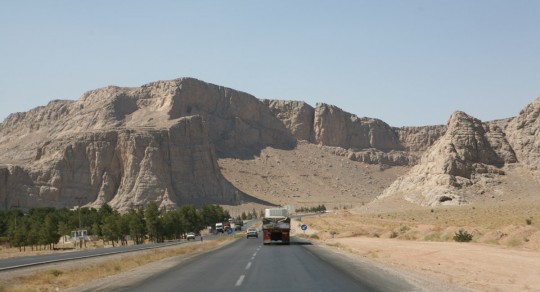
Esfahan, one of the most beautiful cities in the Eastern world, is the country third largest populated place. It is more complicated to navigate than Shiraz where I went everywhere by foot.
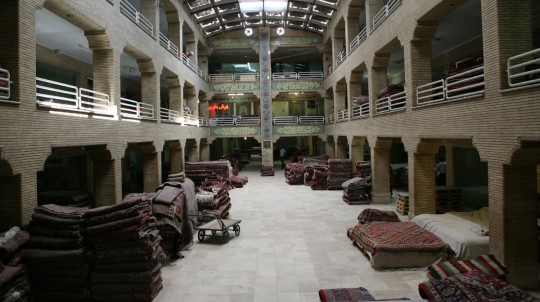
In fact, I decide to spend two nights there, in another touristic complex (US$10) with a vague soviet feel. I leave the car at the campsite and explore the city by bus. Transportation is cheap here also, and you never pay more than few cents to take the bus or, in Tehran, the subway.
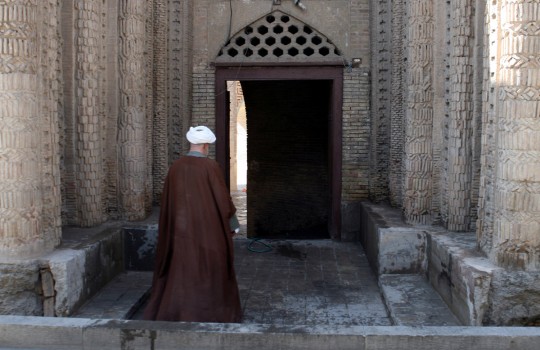
I first visit the Hakim Mosque, the oldest in the city, as I follow the Lonely Planet walking tour, one of my favorite features in the guide.
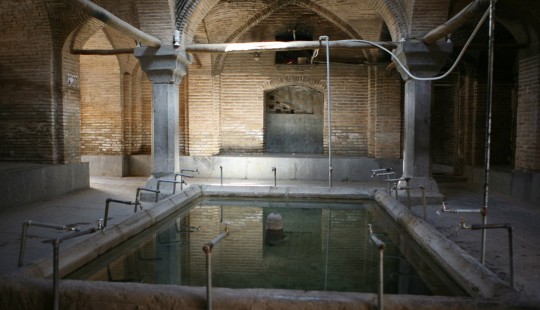
Then I enter the Bazar-e Bozorg where vendors sell carpet, household items, spice, jewelry and fake brand-name clothing. It is a thousand-year old labyrinth with mosques, banks, gardens and many alleys.
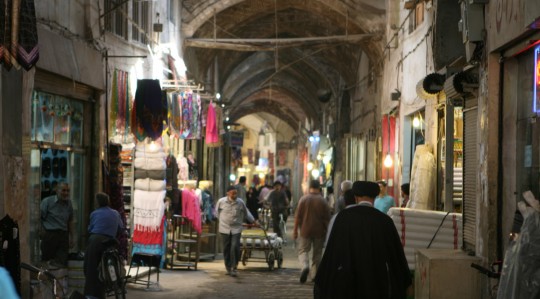
One of them leads me to the Jameh Mosque dating from the 11th century. The central ablution fountain in the courtyard was designed to imitate the Kaaba in Mecca.
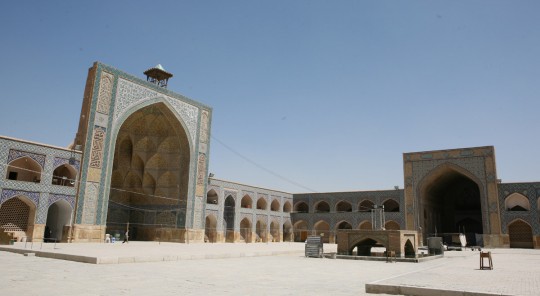
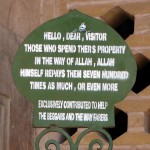
I continue to walk through the alleys. Such covered markets are great as you are protected from the heat of the day by the arcades. Around noon I venture out for a quick visit to the bird market where friendly vendors show me some species and we compare the names of the bird in Farsi and English languages.
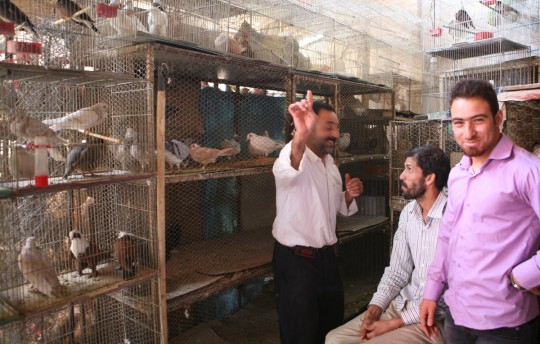
I also visit the Mausoleum of Harun Vilayet which features impressive mosaics of Khomeini and Khamenei.

Back in the bazaar, I try to find a place to eat. Most of the eating options in Iran are kababs. Those are served with rice, bread and tomatoes. Cooked over charcoal, this food is relatively healthy.
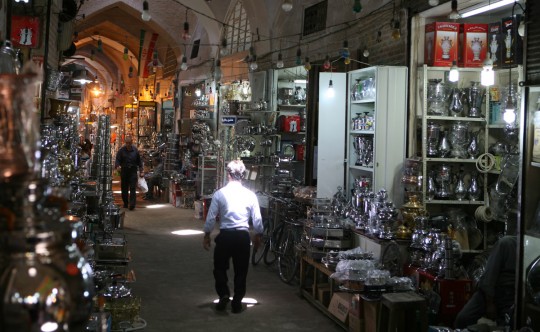
Everybody here drink “dugh” which is sour milk and yogurt mixed with water. It is very refreshing and kind of similar with the drinking yogurt you can find in the U.S., without sugar.
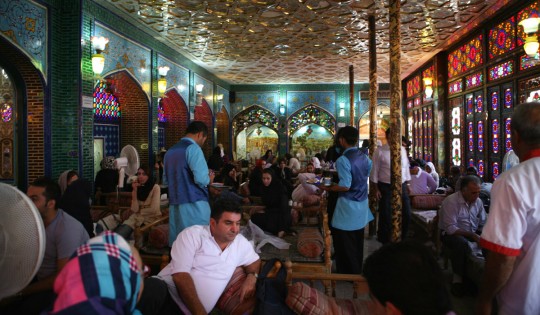
I stop for lunch in a traditional restaurant close to the Imam Square, where parties sit on day bed and can try Iran specialties.
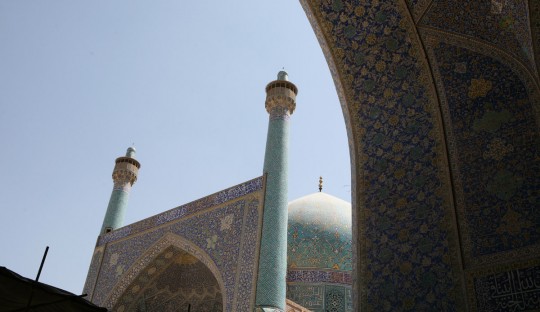
Afterward I go visit the Imam Mosque and its two turquoise minarets, another fine example of the astonishing mosques you find in Iran. It is also on Imam Square, the second largest square in the world. By then I begin to be tired but find the energy to visit the Al Qapu Palace from which I can get a good view of the square.
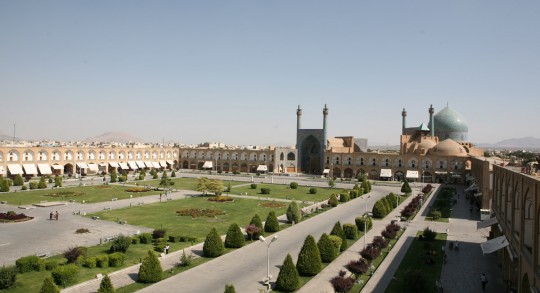
Before going back to the campsite after this heavy day of walking, I go get a glimpse at the Si-o-Seh bridge crossing the Zayandeh River. There’s a teahouse at the end of the bridge where people relax and hide from the sun.
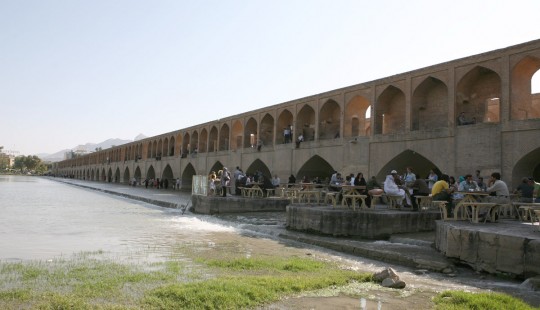
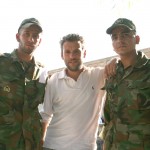
I go back “home” to take some well deserved rest. I continue to watch the “long way round” television series, and get more excited about crossing Siberia. I decide that I will go straight to the Russian Embassy when I arrive in Tehran and see if it is possible to get a visa quickly.
After one more day of driving, I enter the crazy traffic of Tehran. At nightfall, I accept that it is no place to camp, and find the Khayyam hotel, a bit too expensive to my taste (US$18), but with a parking lot, which is rare in the city. It will be my base for few days as I will be working on paperwork and visiting the city. The Ramadan begins the following day, and it will be more convenient to be at the hotel, since you can’t drink, eat or smoke in the street during the day. I think the most difficult is to not be able to drink water, especially when you have to run everywhere under a fierce sun to get things done.
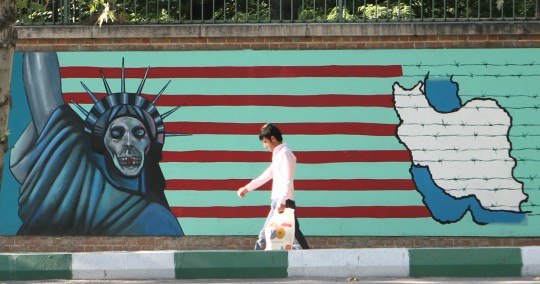
It is an impossible city to navigate and a challenge to find places. The first day I go to the Russian Embassy to find it close. I spend hours trying to locate the Kazakhstan Embassy and decide to go the following day. I get some work done on my car as the hotel is located in an area where I can find a lot of things usually difficult to get. I lubricate my chassis in the hope it will eradicate a thumping noise I get each time I stop the car. Check and top transfer case oil and change sparking plugs. The following day I am back on the visas quest. The Russians have bad news for me. It would take more than two weeks to get the visa. Plus one week for Kazakhstan and five days for Turkmenistan. My Iranian visa is not long enough, and anyway I need to keep moving.
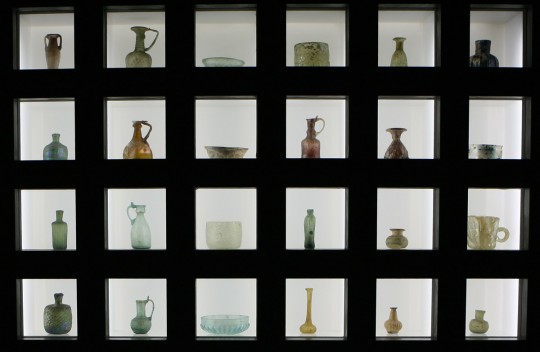
I have to find another way. Finally at the end of the afternoon, I find out there may be a container boat leaving Bandar Abbas for Mumbai, India at the end of next week. I have to check back with Maersk, the maritime company on Sunday. That would means I would backtrack 1,000 miles (1,600 km) to the port I arrived at, and stuff the truck in a container. If there is no cabin available in the boat – which is likely – I will take the ferry back to Dubai and fly to Mumbai. The cost of shipping – all included – should be around US$800. The ferry will cost me another $100 and the flight $150. Sailing time for the container boat is four days. Now I am kind of sad to not cross Siberia. But this is the deal. I have to keep moving east.

